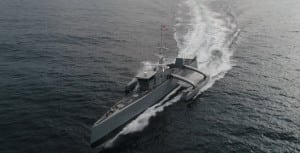
The Navy’s FY 2021 budget request explains a new acquisition plan for the Large Unmanned Surface Vehicle (LUSV), pushing back the first vessel to FY ‘26. Congress pushed back on the Navy’s plans in the FY ’20 budget request, which planned for a new 10-ship LUSV fleet starting with $400 million for two Ghost Fleet/Overlord-style vessels that year, followed by two new LUSVs per year through FY ’24. The total program cost through vessel 10 would be $2.7 billion. Congress…

 By
By 









